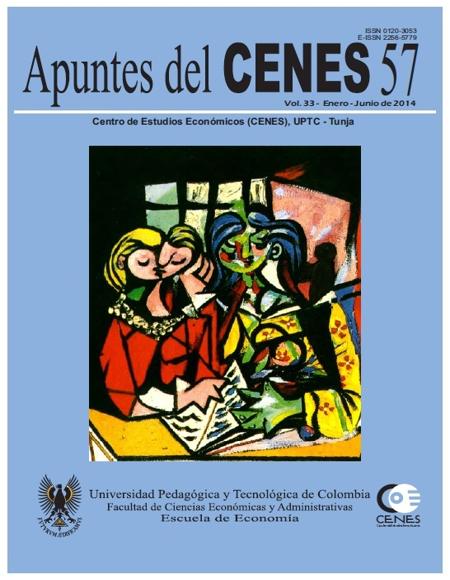Occupational segregation, selection effects and gender wage differences: evidence from urban Colombia

Abstract
This paper assesses the effects of occupational segregation on the gender wage gap in urban Colombia between 1986 and 2000. The empirical methodology involves a two step procedure where by the occupational distributions ofworkers by gender aremodelled using a multinomial logit model in the first stage. In the second stage, the multinomial logit estimates are used not only to derive a counterfactual occupational distribution of women in the absence of workplace discrimination but also to correct for selectivity bias in thewage equations for each occupational category using the procedure suggested by Lee (1983). Besides the explained and unexplained components in conventional decompositions of the gender wage gap, this methodology differentiates between the justified and unjustified effects of the gender allocation ofworkers across occupational categories. The results for urban Colombia indicate that controlling for selectivity bias at the occupational category level is found to be relevant in all years reviewed in this study. They also suggest that a changing composition of the female labour supply in terms of un observables (i.e., ability and motivation) is playing a role in the dramatic reduction of the observed wage gap.
Keywords
Occupational segregation, gender wage gap, multinomial logit, selection bias, Colombia
References
- Acosta, C. E. & Isaza, J. G. (2006). Gender, poverty and labour market dynamics: a microsimulations analysis for urban Colombia between 1990 and 2004. Social Science Research Network -SSRN. Retrieved fromhttp://ssrn.com/abstract=1281545.
- Anker, R. (1997). Theories of occupational segregation by sex: an overview. International Labour Review, 136, 315.
- Appleton, S., Hoddinott, J. & Krishnan, P. (1999). The Gender Wage Gap in Three African Countries. Economic Development and Cultural Change, 47, 289-312.
- Becker, G. (1971). The economics of discrimination. Chicago: University ofChicago Press.
- Blinder,A. S. (1973).Wage discrimination: reduced form and structural estimates. Journal of Human Resources, 8, 436-455
- Borghans, L. &Groot, L. (1999). Educational presorting and occupational segregation. Labour Economics, 6, 375-395.
- Bourguignon, F., Fournier, M. &Gurgand,M. (2007). Selection bias corrections based on the multinomial logit model:Monte Carlo comparisons. Journal of Economic Surveys, 21, 174-205.
- Brown, R. S., Moon, M. & Zoloth, B. S. (1980). Incorporating OccupationalAttainment in Studies ofMale-FemaleEarnings Differentials. The Journal of Human Resources, 15, 3- 28.
- DANE (2000). Encuesta nacional de hogares, ciudades y areas metropolitanas,Manual de Crítica y Codificación, Etapa 108. Bogotá: Dirección Técnica de Estadísticas Básicas, DANE.
- DANE (2004). Metodología de la encuesta de hogares. Bogotá: Dirección Técnica de EstadísticasBásicas,DANE. Recuperado de http://suamox03.dane.gov.co:7778/imgcurso/mettran/indice.html
- Duncan, O. D. & Duncan, B. (1955). A Methodological analysis of segregation indexes. American Sociological Review, 20, 210-217.
- Edwards, S. (2001). The economics and politics of transition to an open market economy: Colombia Paris. Organisation for Economic Co Operation and Development OECD.
- Grazier, S. &Sloane, P. J. (2007). Accident risk, gender, family status and occupational choice in the UK. Labour Economics, In Press, Corrected Proof.
- Gyourko, J. &Tracy, J. (1988). An analysis of public- and private-sector wages allowing for endogenous choices of both government and union status. Journal of Labor Economics, 6, 229-253.
- Hakim, C. (1992). Explaining trends in occupational segregation: the measurement, causes, and consequences of the sexual division of labour. European Sociological Review, 8, 127-152.
- Heckman, J. J. (1979). Sample selection bias as a specification error. Econometrica, 47, 153-161.
- Isaza, J. G. (2002)Women workers in Bogota’s informal sector: gendered impact of structural adjustment policies in the 1990s. Planeación y Desarrollo 33, 411-468.
- Isaza, J. G. & Reilly, B. (2009). Occupational segregation by gender: an empirical analysis for urbanColombia (1986-2004): Brighton,Department of Economics,University of Sussex.
- Isaza, J. G. (2013). Occupational segregation, gender wage differences and trade reforms: empirical applications for urban Columbia. Doctoral thesis, University of Sussex. Retrieved from: http://sro.sussex.ac.uk/44798/
- Karmel, T. & Maclachlan,M. (1988). Occupational sex segregation increasing or decreasing? Economic Record, 64, 187.
- Lee, L.-F. (1983). Generalized econometric models with selectivity. Econometrica, 51, 507-512.
- Liu, P.-W., Zhang, J. &Chong, S.-C. (2004). Occupational segregation and wage differentials between natives and immigrants: evidence from Hong Kong. Journal of Development Economics, 73, 395-413.
- Meng, X. & Miller, P. (1995). Occupational segregation and its impact on gender wage discrimination in China’s rural industrial sector. Oxford Economic Papers, 47.
- Miller, P.W. (1987). Thewage effect of the occupational segregation ofwomen in Britain. The Economic Journal, 97, 885-896.
- Neuman, S. & Silber, J. G. (1996).Wage discrimination across ethnic groups: Evidence from Israel. Economic Inquiry, 34, 648.
- Nunez, J., Ramírez, J. C. & Cuesta, L. (2005).Determinantes de la Pobreza en Colombia, 1996-2004.DocumentoCEDE, 1-45.
- Núñez, J. & Sánchez, F. (2002).Adynamic analysis of households decisionmaking inColombia, 1976-1998: changes in household structure, human capital and its returns, and female labor force participation. Documento CEDE, 15, 1-50.
- Oaxaca, R. (1973). Male-female wage differentials in urban labor markets. International Economic Review, 14, 693-709.
- PNUD (2003). El conflicto, callejón con salida (Informe Nacional de Desarrollo Humano Colombia - 2003). Bogotá: Programa de Naciones Unidas para el Desarrollo.
- Reilly, B. (1991).Occupational segregation and selectivitybias in occupational wage equations: an empirical analysis using Irish data. Applied Economics, 23, 1.
- Ribero, R. (2003). Gender dimensions of non-formal employment in Colombia. Documento CEDE, 1-84.
- White, H. (1980). Aheteroskedasticity-consistent covariance matrix estimator and a direct test for heteroskedasticity. Econometrica, 48,817-838.
